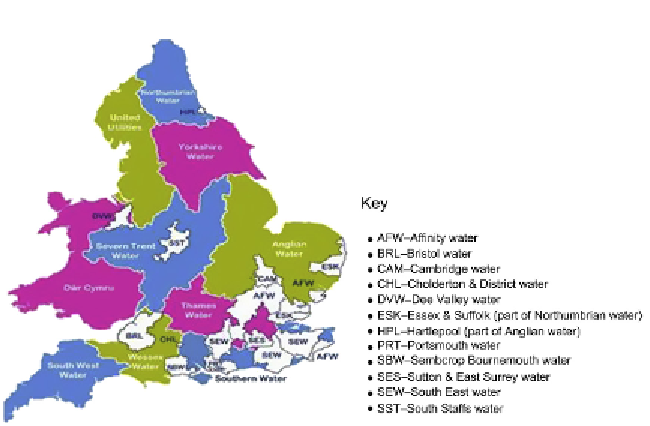Biology Reference
In-Depth Information
Figure 11.1
Map and key to show coverage of water supply companies across England
and Wales. (For color version of this figure, the reader is referred to the online version
of this topic.)
to make it fit for human consumption. These processes involve, but are not
limited to, removing any harmful microbes, pathogens, chemicals, taste or
odors. Pathogens of human origin are considered to be the greatest risk
to the safety of drinking water. This includes waterborne diseases such as
cholera and typhoid, which are only found in humans but are particularly
infectious
3
(when present as pathogens in the water supply). “Pathogens” are
considered to include bacteria, such as
Salmonella
and
Campylobacter
; viruses
such as hepatitis A and norovirus; and protozoa, such as
Cryptosporidium
and
Giardia
.
62
Pathogens are able to enter the water supply in a number of ways. One of
the main causes is when surface water becomes contaminated due to the pres-
ence of untreated sewage entering rivers or run-off of wastewater that contains
animal waste. Surface water is also much more likely to become contaminated
during storms or periods of heavy rainfall.
4
Contamination of groundwater
can also happen, although it tends to be rare due to the subsurface offering
self-purification of the water and eliminating most pathogens. However, some
pathogens do occasionally bypass the soil, for example with leaking latrines or
sewers, and are able to enter and contaminate the groundwater system.
5
The quality of water in the UK has to adhere to the EC Drinking Water
Directive (98/83/EC).
6
The standards defined in this are implemented

Search WWH ::

Custom Search